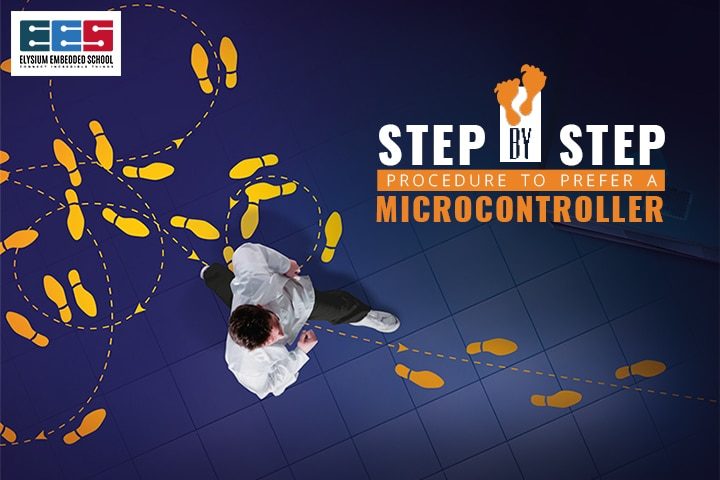
Emerging Reasons to Learn the Robotics Course
October 19, 2019
Best Way to Enroll IoT Training Course
November 4, 2019How to Choose a Microcontroller: Choosing the perfect microcontroller for a project is a complex decision to make because it is the major part of the project. In fact, there are several types of the microcontroller. Each has its own and unique feature or competitive advantage from form factor, to package size, to the capacity of RAM and ROM which makes them it is fit for particular applications. To begin with, preferring the right microcontroller for an embedded product can be a sophisticated task. First, begin to select a microcontroller before the details of the system have been hashed out. Here, there are step-by-step procedures to select the right microcontroller such as
Application
To begin with, before microcontroller programming for any project is to build a deep understanding of the task for which the microcontroller-based solution is to be deployed. In fact, the technical specification sheet is always developed. It helps to identify the certain features that the microcontroller will be used for the project.
Choose Microcontroller Architecture
In that case, the architecture of the microcontroller represents how the microcontroller is structured internally. There are two architectures which are used for the microcontroller designs.
- Harvard Architecture
- Von Neumann Architecture
The features of Harvard architecture can be the use of separate buses for data transmission and fetching instructions. On the other hand, Von Neumann architecture features the use of the same bus to transfer the data and fetch instruction sets from memory. Hence, the data transfer and instruction fetch can't be performed and are usually scheduled.
Bit Size
As a matter of fact, a microcontroller can either be a 8bits, 16bits, 32bits, and 64bits. Currently, 64bits is the maximum bit size possessed by a microcontroller. The bit size of a microcontroller refers to "word" size that is used in the instruction microcontroller set. However, this means in an 8bit microcontroller, the representation of every instruction, variable, address or the register takes 8-bit. Significantly, the effect of the bit size experienced when developing the firmware for the microcontroller. Especially, for arithmetic operations. In fact, the various data types have various memory sizes for various microcontroller bit size. Therefore, it is important to choose the microcontroller along with a bit size that matches that of the data to be processed.
Create a Hardware Interfaces List
As a matter of fact, make the list of all the external interfaces that it will need to support. In general, there are two different types of interfaces. The first type of interface such as communication. These are the peripherals includes USB, I2C, UART, etc. On the other hand, the second type of interface is digital inputs and outputs, analog to digital inputs and so on. However, these two types can determine the number of pins that will be required by the PIC microcontroller.
Determine the Software Architecture
In that case, the software architecture can greatly affect the selection of a microcontroller. How heavy or how light the processing requirements can identify whether you go with an 80MHz DSP or an 8 MHz 8051. In order to get an order of magnitude to feel for how much processing power will be needed. However, the amount of computing power required can be one of the best requirements for microcontroller architecture.
Memory Requirements
RAM and Flash are the two important components of any microcontroller. Ensure that you don't skip out of the program space or variable space. In fact, it is simple and very easy to choose a part with too much of these features. At the same time, using the software architecture and the communication peripherals that include in the application, you can determine how much RAM and flash will need of the application.
Power Consumption
It is the most important factor to consider when selecting a microcontroller. Especially, it is deployed in a battery-powered application such as IoT devices where it is desired that the microcontroller is as the less power as possible. In final, make sure the microcontroller you are selecting that satisfies the power requirements for the projects.
Conclusion
It is also important to select a right microcontroller with a good evaluation kit, so you can quickly start building the prototype and test out features easily. In fact, the evaluation kits are a good way to acquire experience, get familiar with the toolchain used for development, and save time during the development of the device. Selecting the perfect microcontroller for a project will continue to be a problem, every hardware designer will have to solve and while few more factors may influence the choice of microcontroller, these factors mentioned above are the most important.





